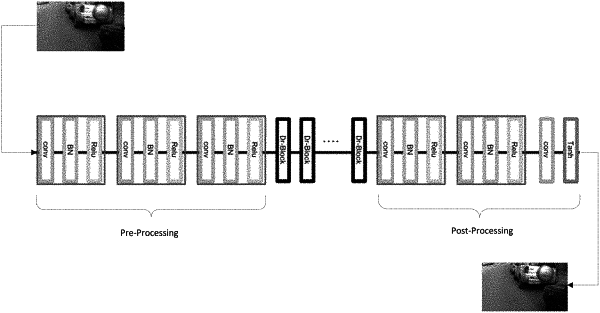| CPC G06T 5/002 (2013.01) [G06T 1/20 (2013.01); G06T 5/50 (2013.01); G06T 11/005 (2013.01); G06T 11/006 (2013.01); G06T 2207/20024 (2013.01); G06T 2207/20081 (2013.01); G06T 2207/20084 (2013.01); G06T 2207/20182 (2013.01); G06T 2211/424 (2013.01)] | 18 Claims |

|
1. A computer-implemented method for performing blind deconvolution of corrupted images comprising:
iteratively performing a minimization of a sum of a data fidelity term and an image prior term using a Douglas-Rachford algorithm;
wherein a proximal operator of the—data fidelity term is represented in each iteration by a deep neural network trained to approximate the data fidelity proximal operator;
wherein a proximal operator of the image prior term is represented in each iteration by a deep neural network trained to approximate the image prior proximal operator; and
wherein the deep neural network trained to approximate the data fidelity proximal operator is different for each iteration and further wherein the deep neural network trained to approximate the image prior proximal operator is different for each iteration.
|